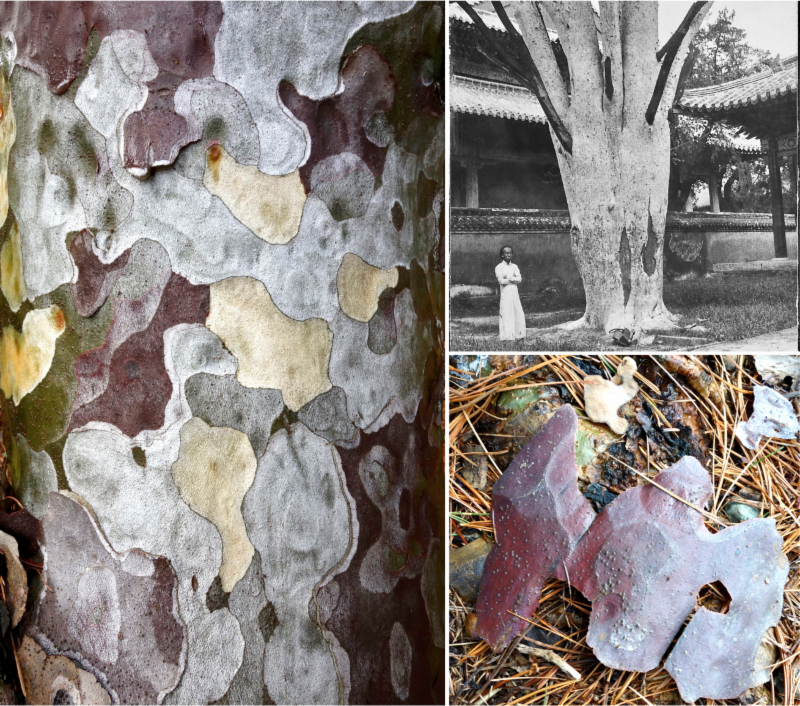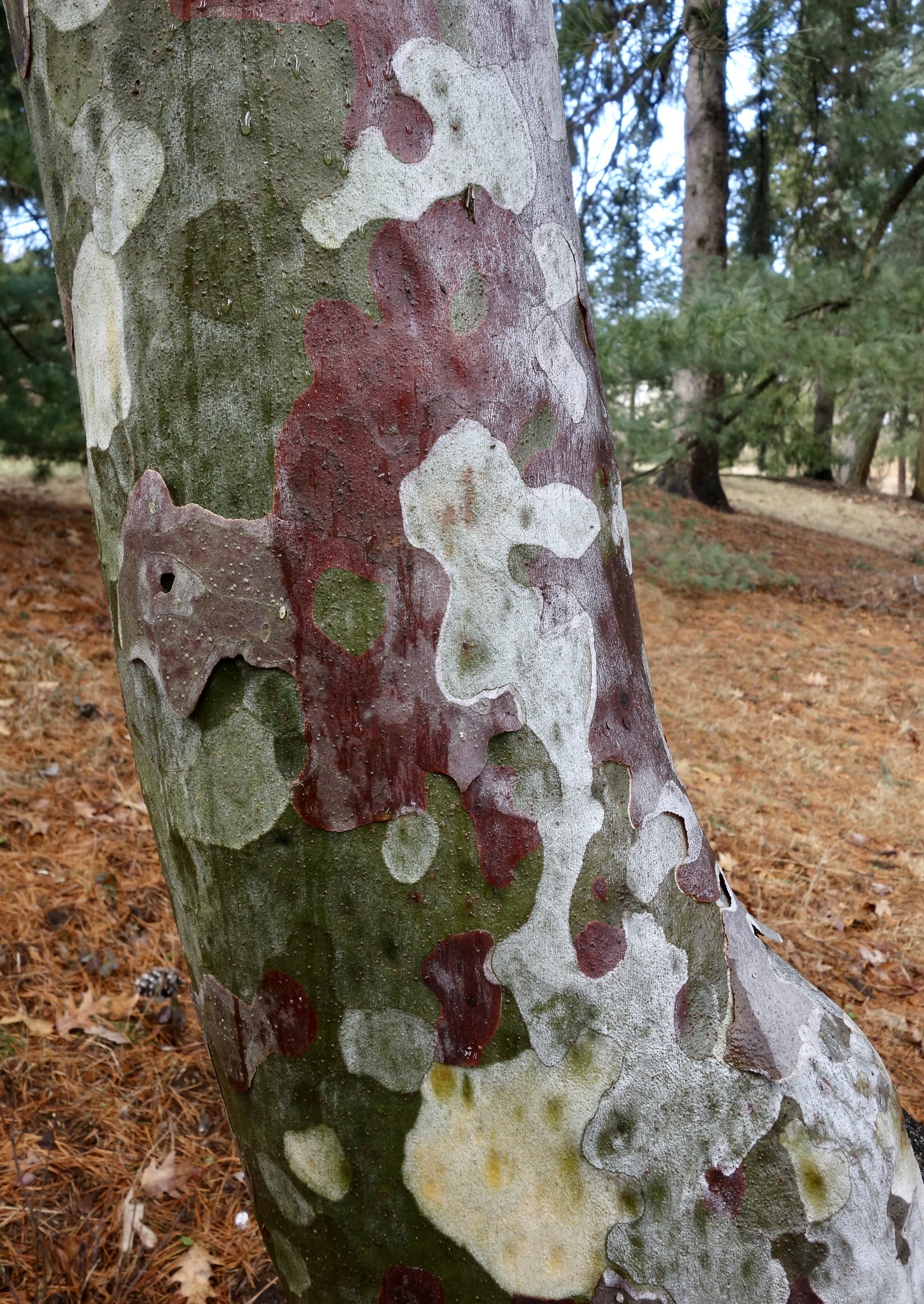Yesterday, after the light rain ended, the sun broke through and beckoned me into the Conifer Collection at the Arnold Arboretum. With the still-wet barks glistening, everything from the firs (Abies) to the pines (Pinus) to the plum yews (Cephalotaxus) were breathtaking. But nothing can possibly exceed the dramatic bark of the Chinese lacebark pine (白皮松), Pinus bungeana. With bark that exfoliates in the winter in large puzzle-shaped pieces, colors that range from avocado to grapefruit rind, crimson, silver, lime and even a bit of peach can all be found interdigitating on a single trunk (left image). Closer examination will demonstrate that the north and south sides of the trunk differ in their color schemes (north trends more silvery white). The odd thing is that descriptions and photographs (upper right, by Arnold Arboretum explorer Frank Nicholas Meyer, September 7, 1907) of lacebark pine from China always note the milk-white bark. Perhaps our trees are just not old enough yet (Meyer estimated the tree in the image to be 1,500 or more years old).
As the older red bark (about to be retired from protecting the inner tree from the outer environment) peels away, it exposes the underlying greener (photosynthetic) younger bark, ready to do a year of duty. Look down, and you will see the puzzle pieces of bark among the shed needles (lower right image).

The Arboretum has nine lacebark pines, but my favorite specimen by far is one located just off Conifer Path, 663-49*C, and featured here. It came to the Arboretum in March of 1949 from our wonderful partners at Lushan Botanic Garden. On March 5, 2011, this tree was blown over in a winter storm. I was heartbroken. The next day, Arboretum horticulturists and arborists snapped into action, righted the tree, cabled it to a neighbor, and here we are, eight years later—a magnificent tree to behold in the winter. Make this a destination soon.
